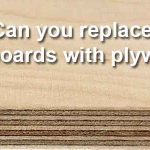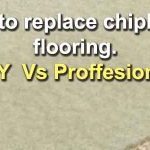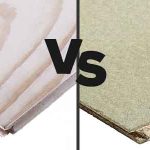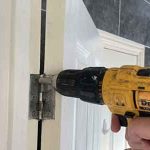There are many reasons you may need to replace floorboards. This could be due to:
- Damaged boards
- Uneven floorboards
- Damp under floorboards
- Squeaking floorboards
If you do end up replacing existing boards, there are several ways you can do this. For individual floorboards, you may simply decide to replace them with a like for like material. This would mean buying some new wooden floorboard.
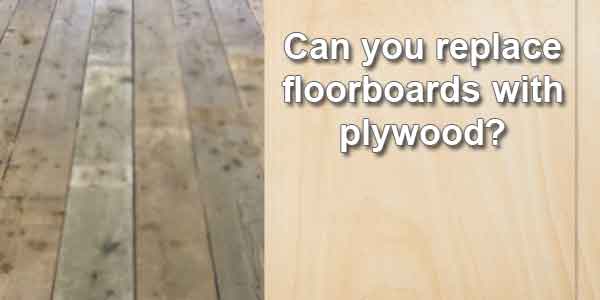
Another common option is tongue and groove chipboard flooring. This is a cheaper alternative, which is also easy to fit and can usually be installed quicker, due to larger sheets (600 x 2400mm).
But can you replace floorboards with plywood? This is a common sheet material, and it is known for being a strong and high-quality product. But can it be used for flooring?
The simple answer is yes, you can replace floorboards with plywood. However, plywood tends to be quite expensive. Also, standard sheets do not have a tongue and groove to form interlocking boards. This is preferred, as t&g helps to form and maintain an even surface.
However, you can actually buy tongue and groove plywood flooring. This is far less common than chipboard and you will likely need to buy online. But it does exist, and many people prefer to use it over chipboard flooring.
One of the main negatives of t&g plywood flooring is price. For 22 x 600 x 2400mm tongue and groove plywood, you should expect to pay around £35 per sheet. Compare this with chipboard in the same dimensions, and you will pay nearer £20 per sheet. As you can see, this is nearly twice as expensive.
Using non t&g plywood for flooring
If you do decide to use plywood for your flooring, it is better to try and source tongue and groove boards. Whilst standard boards are strong, they can have issues due to butt joints. One of the main issues would be the result of moisture.
When any wood-based material has changes in moisture content, this can cause it to expand and contract. Plywood is no different in this regard.
As the sheet takes on moisture it will expand, and when the material dries it will contract. This is not unusual and the same would happen with standard floorboards, and definitely chipboard.
The main issues occur when the joints are not interlocking. This can cause gaps, steps between boards and an uneven surface. With that said, in many cases, this movement is minimal, and you probably won’t have any issues, even if your only using standard plywood. Some of this movement can also be mitigated with good fixings.
This will be less of an issue, for replacing small areas such as individual boards. In this case, a small amount of movement would not cause any issues.
Advantages of replacing floorboards with plywood
Whether you are replacing a small area with plywood, or an entire floor, it does offer some benefits.
The main benefit is strength. Plywood is made by combining thin layers of wood. This wood is cut directly from the surface of timber logs with a type of lathe. The lathe has sharp blades which peel a continuous layer of wood veneer from the surface.
Following cutting and drying, these layers are applied with a type of adhesive resin. They are then layered on top of each other, with the grain of each veneer sheet running at a right angle. This cross laminated structure improves the sheets strength and stability.
Following this, the sheets are compressed at high temperatures to bond them together.
The end result is a material with high tensile, flexural and shear strength, which make this a very strong product for use in flooring.
It is also worth noting, that plywood has far better water-resistant qualities than a product like chipboard.
So as you can see, it is stronger and more moisture resistant than the most popular like for like alternative (chipboard). The main reason chipboard is more common, is price. It is very likely that tongue and groove plywood, would be more popular if it were as cheap as chipboard.
Conclusion
As you can see, plywood can be used to replace floorboards. However, it is less common and there are other materials that are used more frequently. This is mainly standard timber floorboards, or tongue and groove chipboard flooring. There are also other materials that can be used, such as OSB, which just like ply can be bought in standard sheets or tongue and groove.
The main considerations when you decide to use plywood or not, will be cost and quality. If you really want a strong and robust floor, it might be worth paying a little extra for ply. However, in most cases, basic chipboard flooring is often sufficient.
Ultimately, the material you choose will be based on a case-by-case basis.

